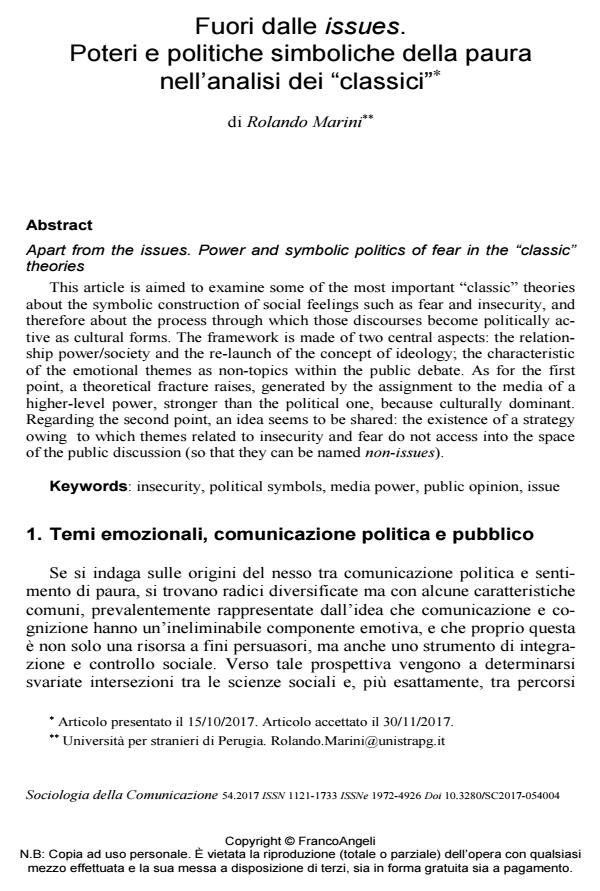Apart from the issues. Power and symbolic politics of fear in the "classic" theories
Journal title SOCIOLOGIA DELLA COMUNICAZIONE
Author/s Rolando Marini
Publishing Year 2018 Issue 2017/54
Language Italian Pages 24 P. 40-63 File size 108 KB
DOI 10.3280/SC2017-054004
DOI is like a bar code for intellectual property: to have more infomation
click here
Below, you can see the article first page
If you want to buy this article in PDF format, you can do it, following the instructions to buy download credits

FrancoAngeli is member of Publishers International Linking Association, Inc (PILA), a not-for-profit association which run the CrossRef service enabling links to and from online scholarly content.
This article is aimed to examine some of the most important "classic" theories about the symbolic construction of social feelings such as fear and insecurity, and therefore about the process through which those discourses become politically active as cultural forms. The framework is made of two central aspects: the relationship power/society and the re-launch of the concept of ideology; the characteristic of the emotional themes as non-topics within the public debate. As for the first point, a theoretical fracture raises, generated by the assignment to the media of a higher-level power, stronger than the political one, because culturally dominant. Regarding the second point, an idea seems to be shared: the existence of a strategy owing to which themes related to insecurity and fear do not access into the space of the public discussion (so that they can be named non-issues).
Keywords: Insecurity, political symbols, media power, public opinion, issue
- Silencing Refugees’ Voices in Educational Practices Valentina Tudisca, Adriana Valente, pp.79 (ISBN:978-3-031-73517-2)
- The public discourse on immigration in Italian school textbooks Adriana Valente, Valentina Tudisca, Silvia Caravita, in MONDI MIGRANTI 1/2022 pp.139
DOI: 10.3280/MM2022-001008
Rolando Marini, Fuori dalle issues. Poteri e politiche simboliche della paura nell’analisi dei "classici" in "SOCIOLOGIA DELLA COMUNICAZIONE " 54/2017, pp 40-63, DOI: 10.3280/SC2017-054004